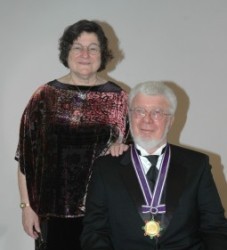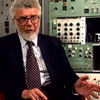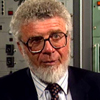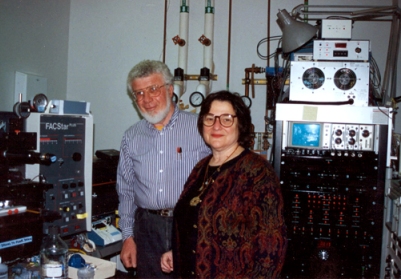Home Cytometry History Individual Histories Leonard Herzenberg

Leonard Herzenberg

Leonard Herzenberg with FACS 1 circa 1972
As soon as Leonard Herzenberg heard about the technologies being developed to separate cells, he knew what the enormous potential was for cell biology. Len is one of cytometry’s most important pioneers. He knew that if he could separate cells, he could better study their biochemistry and immunology. While he was not an engineer himself, he knew well before most biologists that the multidisciplinary approach was the only way to reach his objectives. Len’s work led to the commercialization of cell sorters by Becton Dickinson, and this has resulted in a significant number of quality instruments from several manufacturers available to scientists today.
His many contributions include driving the commercialization of cell sorters into the most important field of all – immunology. Len spent time in César Milstein’s laboratory right at the time Milstein was creating the monoclonal antibody. César Milstein credits Herzenberg with coming up with the term "hybridoma" while on sabbatical in his lab.

Leonard and Leonore Herzenberg in 2006, when he received the Kyoto Prize
The laboratory of Leonard Herzenberg at Stanford University has been the site of many developments and innovations since 1959. It has been the research home to many scientists, and hosted numerous visiting scientists. It is one of the most recognized places of cytometry. Len and his colleagues have been responsible for training and equipping an untold number of people in the field of cytometry. Len was awarded the Kyoto Prize in recognition of his accomplishments - truly an honor for the entire cytometry community.
Please see disc 2 for complete set of videos. See disc 2 Table of Contents

Len Herzenberg explains: Why he needed a cell sorter
Can’t view the videos? You may need a plugin or update. Click for suggested downloads

Len Herzenberg explains: How did the fluorescence activated cell sorter begin?
Leonard Herzenberg discusses six additional topics on disc 2. See disc 2 Table of Contents
Leonard Herzenberg and his wife Leonore Herzenberg, have been working together in the field for many years. A complete telling of their story, GENETICS, FACS, IMMUNOLOGY, AND REDOX: A Tale of Two Lives Intertwined may be found here

The Herzenberg group has produced numerous publications. For a complete list, see the Herzenberg Laboratory website
